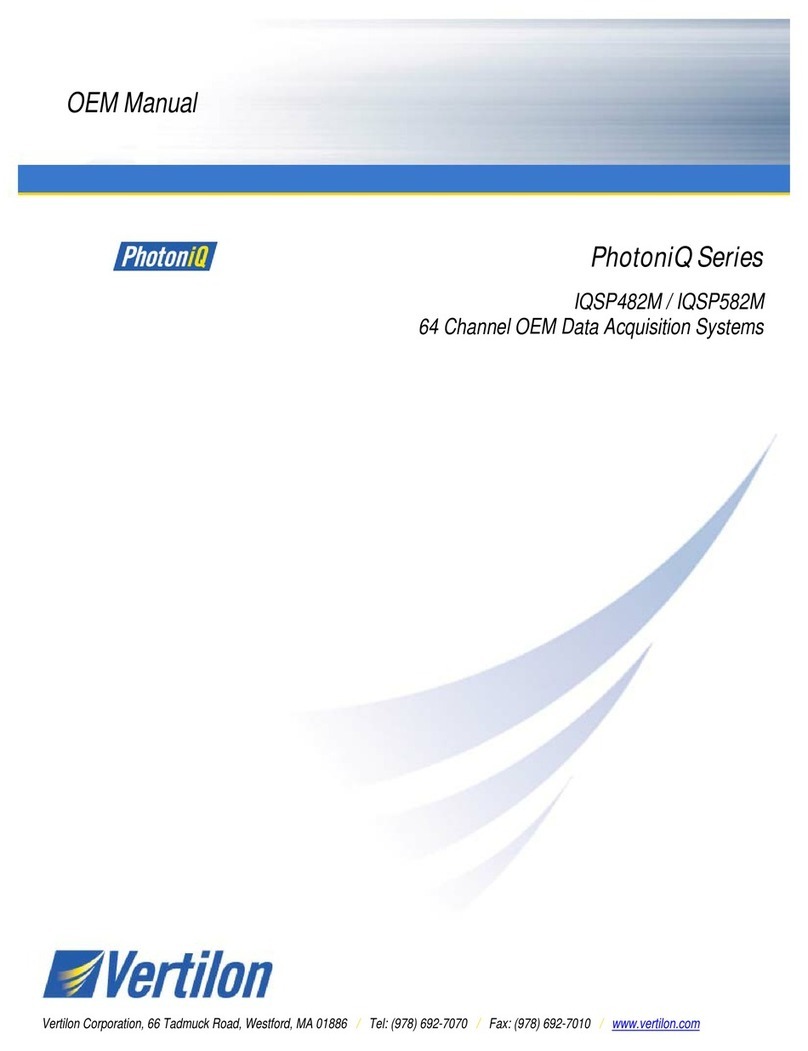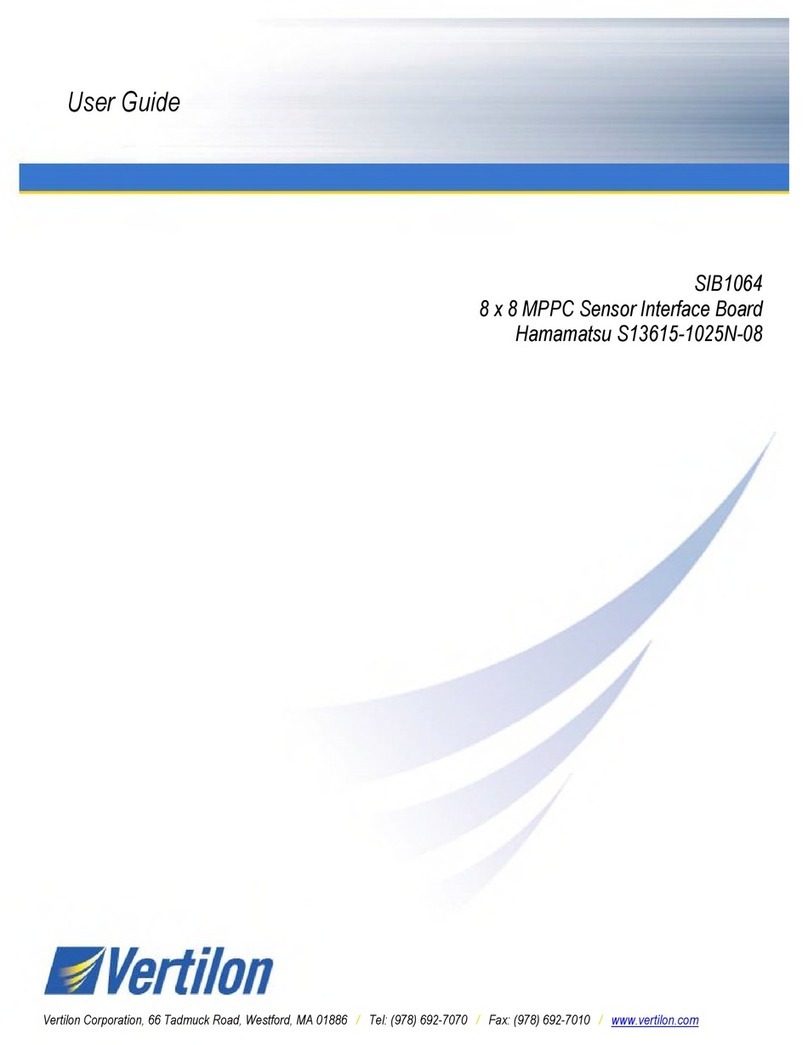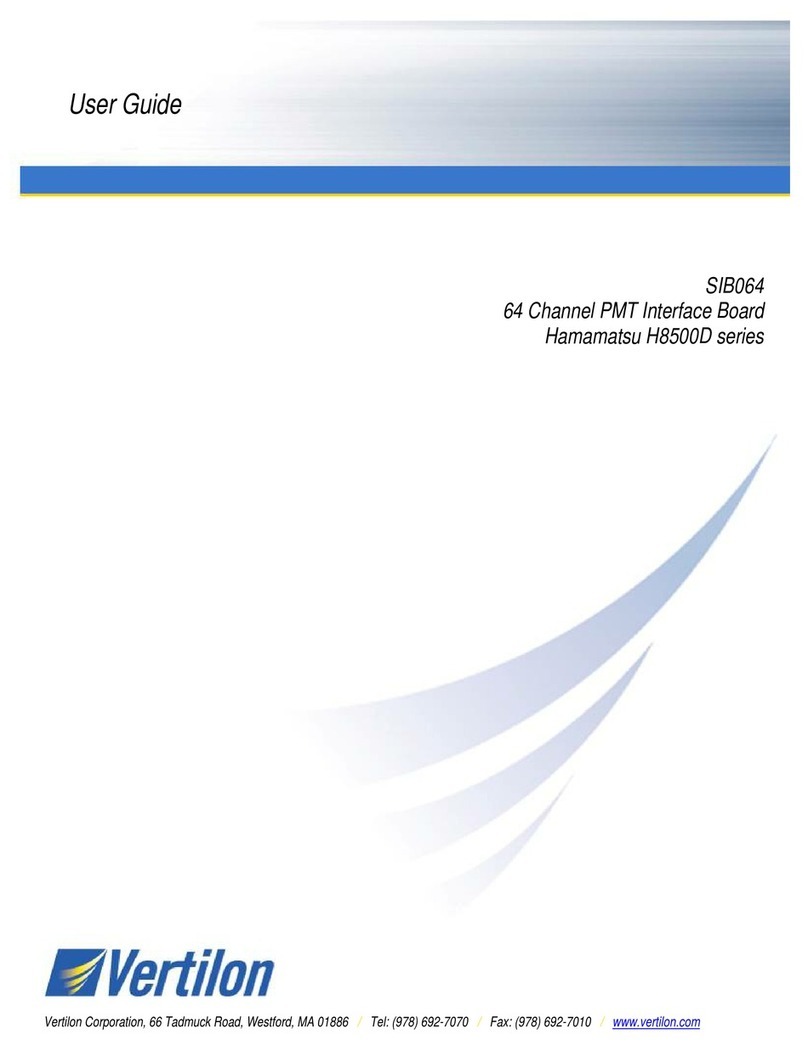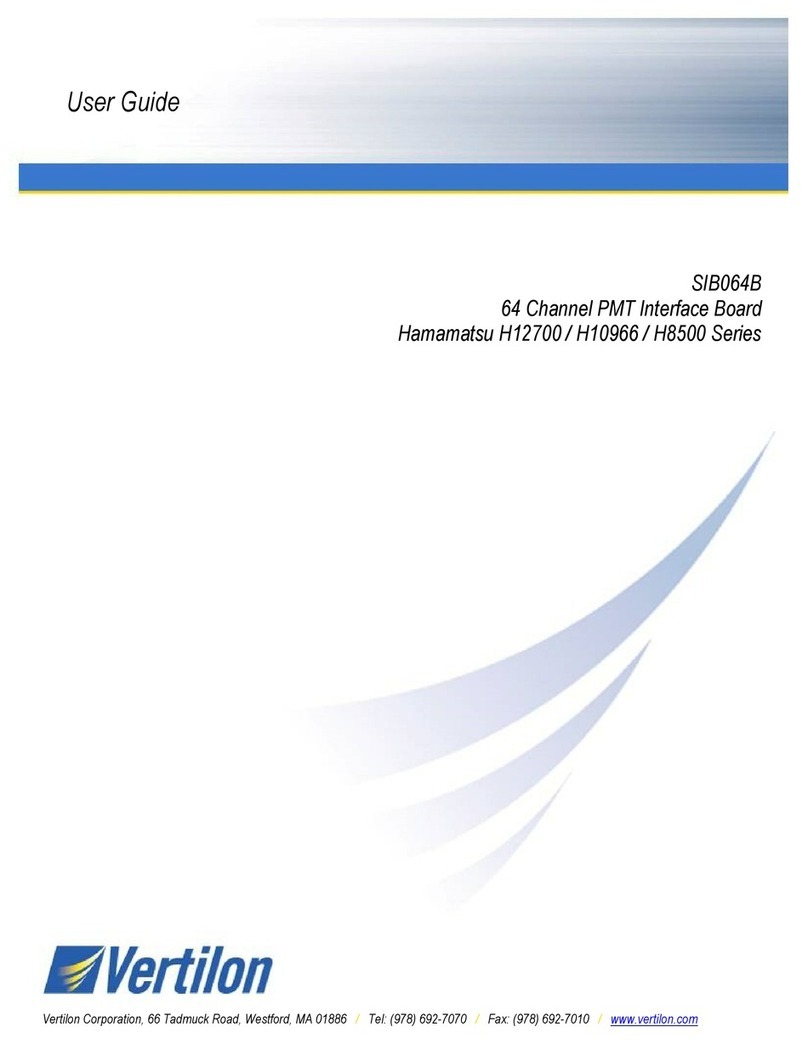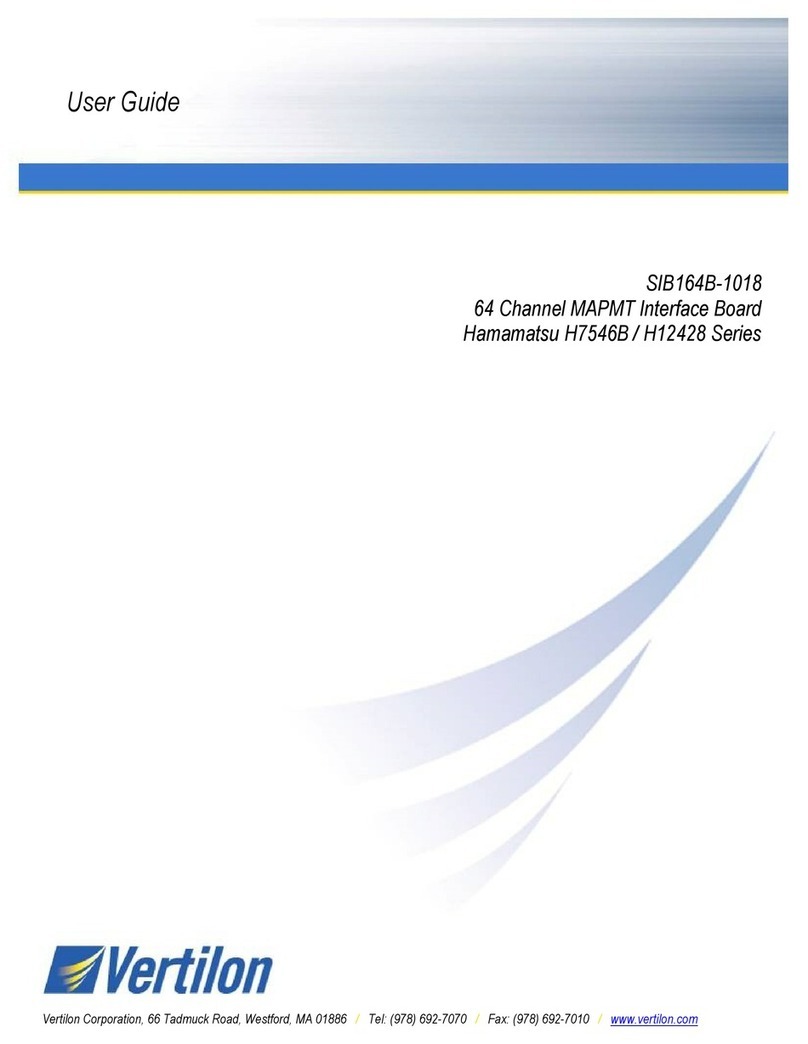
SIB2316 Sensor Interface Board SensL SPMArray2
- 8 -
Vertilon Corporation, 66 Tadmuck Road, Westford, MA 01886 /Tel: (978) 692-7070 /Fax: (978) 692-7010 /www.vertilon.com
Product Overview
The SIB2316 silicon photomultiplier (SiPM) interface board provides the mechanical and electrical connectivity between
two SensL 16 element SPMArray2s and external signal processing electronics such as a Vertilon PhotoniQ multichannel
data acquisition system. Each SPMArray2 connects to the SIB2316 through a 39 pin FPC cable connector that carries
the 16 SiPM detector channels and the common anode negative high voltage bias. Two additional FPC cable connectors
on the backside of the board allow the user to reverse-mount the SPMArray2s if necessary. The 32 detector signals from
the SiPM arrays are routed to a connector on the top of the board that connects to a specialized high density coaxial
cable assembly (SIB cable). This arrangement allows the SIB2316 to be conveniently mounted into the user’s optical
setup with the FPC cables connecting to the SPMArray2s and the SIB cable connecting to the data acquisition system.
The SIB cable carries the detector signals from the silicon photomultipliers to the PhotoniQ where the charge from each is
separately integrated, digitized, and sent to a PC for display or further signal processing. The negative high voltage bias
to the SPMArray2s is generated on the SIB2316 and can be trimmed for matching the two arrays. For applications such
as PET imaging that require pulse timing pickoff, circuitry included within the high voltage bias generator monitors the
total current delivered to the 16 elements of each SPMArray2. A preamplifier and discriminator on each array process the
current signals and feed the results to coincidence detection logic where a trigger signal is output when a pulse from each
discriminator is detected within a user-programmable time-coincidence window. Several user adjustments are included
for optimizing system gain, energy level thresholds, and the coincidence detection window width. The full functionality and
operation of the SIB2316is conveniently controlled through the PhotoniQ’s graphical user interface. Intelligent software in
the PhotoniQ constantly monitors the status of its SIB connectors to determine the type of sensor interface board
attached to them. Once recognized, a dialog box specific to the recognized SIB is made available in the GUI through
which the user has complete control over its operation.
The various functions on the SIB2316 are described in greater detail on the following pages. When necessary, refer to
the functional block diagram shown in Figure 1 on the next page.
•Interface board for two SensL SPMArray2 4 x 4 silicon photomultipliers
•Provides 32 channel interface to data acquisition systems
•High speed preamplifiers & discriminators for pulse detection
•Adjustable discriminator gain and energy threshold
•Programmable coincidence detection to less than 5 nsec
•Threshold crossing and coincidence indicator LEDs
•On-board negative high voltage supply for SiPM bias
•100% compatible with Vertilon’s PhotoniQ multichannel DAQs
•No external power supply required
•Sim
lified control throu
h PhotoniQ
ra
hical user interface
